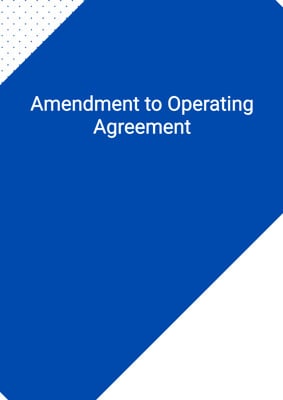How to Tailor the Document for Your Need?
01
Create Document
Fill in the details of the parties. You can click the "Fill with Member’s Information" button to complete it with information saved to your account.
02
Fill Information
Please fill in any additional information by following the step-by-step guide on the left hand side of the preview document and click the "Next" button.
03
Get Document
When you are done, click the "Get Document" button and you can download the document in Word or PDF format.
04
Review Document
Please get all parties to review the document carefully and make any final modifications to ensure that the details are correct before signing the document.
Document Preview
Document Description
The Limited Liability Partnership Agreement is a legal document that establishes a partnership between Party 1, Party 2, Party 3, Party 4, and Party 5. The agreement outlines the purpose of the partnership, which is to conduct business in a specific territory. It also regulates the relationship between the members and the management of the partnership.
The agreement begins with an interpretation section, defining various terms used throughout the document. It clarifies the roles and responsibilities of the members, including the designated members and directors. The agreement also explains the concept of LLP interest, which refers to the members' percentage share and their rights and obligations.
The agreement covers important aspects such as contributions and further finance. Each member is required to make initial contributions to the capital of the LLP, which will be credited to their respective current accounts. The members also undertake to contribute their percentage share of any funding required by the LLP's budget or as agreed by the LLP board.
The agreement addresses the allocation of profits and losses, stating that they will be determined from the LLP's accounts and allocated to the members in proportion to their percentage shares. It also allows for the distribution of surplus cash to the members.
The LLP board is responsible for the overall supervision of the business and has the authority to act on behalf of the LLP. The board is composed of non-executive directors nominated by each member. The agreement specifies the quorum and procedures for board meetings, as well as the reserved matters that require a majority or unanimous vote of the designated members.
The agreement delegates the day-to-day executive management of the business to the chief executive, who is responsible for implementing the business plan and budget approved by the LLP board. The chief executive is assisted by other executive managers, whose appointment and terms of reference are subject to the LLP board's approval.
The agreement also addresses the ownership of LLP property, undertakings by members, expenses, accounts, budgets, and information. It includes provisions for claims by members, default, assignments, confidentiality, announcements, termination, waivers and amendments, notices, governing law, dispute resolution, counterparts, and no rights for third parties.
This agreement is a comprehensive and detailed document that covers all aspects of the limited liability partnership and provides a clear framework for the members' rights and obligations.
How to use this document?
To use this Limited Liability Partnership Agreement, follow these steps:
1. Review the agreement: Read through the entire agreement to understand its provisions and ensure it meets your requirements.
2. Customize the agreement: Modify the agreement as necessary to reflect the specific details of your partnership, such as the names and addresses of the parties involved.
3. Define contributions: Determine the initial contributions that each member will make to the LLP's capital and specify the type of contribution (cash, assets, transfer of property, etc.).
4. Establish further finance obligations: Agree on each member's responsibility to contribute their percentage share of any funding required by the LLP's budget or as determined by the LLP board.
5. Allocate profits and losses: Decide how profits and losses will be allocated among the members based on their percentage shares. Determine whether any surplus cash will be distributed to the members.
6. Appoint directors: Nominate directors to the LLP board, ensuring representation from each member. Designate a chairperson and a chief executive, if desired.
7. Conduct LLP board meetings: Schedule regular LLP board meetings and establish the quorum and procedures for decision-making. Determine the reserved matters that require a majority or unanimous vote of the designated members.
8. Delegate executive management: Delegate day-to-day executive management of the business to the chief executive. Define the roles and responsibilities of other executive managers, subject to LLP board approval.
9. Maintain LLP property: Ensure that LLP property is held on trust for the benefit of the LLP and that appropriate declarations of trust are in place if the property is held by a member or affiliate.
10. Comply with undertakings: Fulfill the undertakings outlined in the agreement, including promoting the best interests of the LLP, acting in good faith, and consulting on matters affecting the business.
11. Keep accurate accounts: Maintain proper accounting records for the LLP and prepare audited accounts, management accounts, and other financial information as required.
12. Resolve disputes amicably: In the event of a dispute, attempt to resolve the matter amicably through negotiation and consultation. If necessary, involve the respective chairpersons/chief executives before resorting to formal dispute resolution.
13. Terminate the agreement: If the LLP is no longer viable or a fundamental deadlock arises, follow the agreed termination process, including winding up the business and distributing assets.
Please note that this guidance is for informational purposes only and does not constitute legal advice. It is recommended to consult with a legal professional to ensure compliance with applicable laws and regulations.
Not the right document?
Don’t worry, we have thousands of documents for you to choose from:






















































